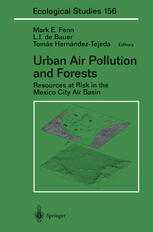

Most ebook files are in PDF format, so you can easily read them using various software such as Foxit Reader or directly on the Google Chrome browser.
Some ebook files are released by publishers in other formats such as .awz, .mobi, .epub, .fb2, etc. You may need to install specific software to read these formats on mobile/PC, such as Calibre.
Please read the tutorial at this link: https://ebookbell.com/faq
We offer FREE conversion to the popular formats you request; however, this may take some time. Therefore, right after payment, please email us, and we will try to provide the service as quickly as possible.
For some exceptional file formats or broken links (if any), please refrain from opening any disputes. Instead, email us first, and we will try to assist within a maximum of 6 hours.
EbookBell Team

4.3
88 reviewsAt present, roughly half of the world's population lives in urban centers. There are now more than 20 cities with a population of over 10 million inhabitants, compared to less than 5 about 50 years ago. This tendency toward urbanization is expected to continue, particularly in the developing world. A consequence of this growing trend is that millions of people are being exposed to harmful levels of urban air pollutants caused mainly by emissions from motor vehicles and from industrial and domestic activities involving the combustion of fossil fuels. The driving force for the design and implementation of emission control strate gies aimed at improving air quality has been the protection of the health of the population in urban centers. There are, however, other consequences of the pres ence of air pollutants besides the direct effect on human health. Reduced visibil ity, damage to monuments and buildings, and many other such consequences indirectly affect our quality of life. Another set of consequences involves damage to ecological systems. In fact, the nature of "photochemical smog" was first uncovered in the 1950s in connection with observations of its harmful effects on crops and plants in the vicinity of Los Angeles.